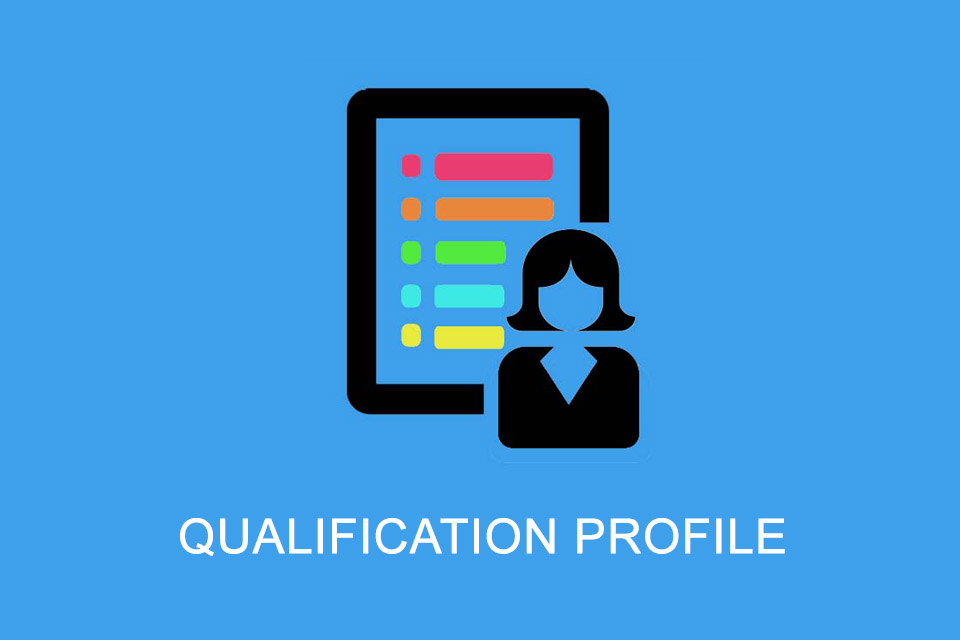What is a Qualification Profile?
Smartpedia: The qualification profile describes the qualifications, skills, competencies and potential a person must have for a position to be filled.
Qualification Profile Definition
For many organisations, developments or projects, the filling of positions is critical to success. Who is best suited for a vacant position? What knowledge, skills and experience are required? With the help of a qualification profile, companies try to answer such questions.
The qualification profile describes which
- qualifications,
- skills,
- competencies and
- potentials
a person must have for a position to be filled. It is used as an instrument in personnel search, personnel selection, personnel development and employee appraisal.
Ways to the Qualification Profile
According to DIN 33430:2016-07¹, which describes requirements for job-related aptitude diagnostics, a qualification profile documents the requirements that an organisation places on employees to fulfil a defined position. According to the DIN, there are 2 ways to create the qualification profile:
- The work analysis, in which the overall activity is broken down into task areas, assigned individual tasks down to individual activities.
- The requirements analysis, in which a workplace is viewed from the point of view of the person working and it is determined which suitability characteristics are necessary for successful completion.
The aim is to find a candidate who has the necessary and desirable qualifications to fill a vacant position in the best possible way. This can be an external or, if necessary, an internal candidate.
The Contents of a Qualification Profile
The following contents belong in a qualification profile:
- Qualifications or formal requirements such as a defined school leaving certificate, an apprenticeship or completed studies, as well as possible advanced training, language skills or driving licences.
- Professional competencies or skills such as the mastery of specific programming languages, project management methods or tools and also the amount of experience with these.
- Social skills or soft skills such as dealing with customers, employees and colleagues, the ability to work in a team, the ability to deal with conflicts, working under deadline pressure, assertiveness etc.
- Potential enables the candidates to develop individual characteristics and competences, e.g. the assumption of responsibility, the acquisition of decision-making skills, the leadership of employees etc.
Tips for Creating Qualification Profiles
There are a number of tips that are useful when creating qualification profiles:
- Ideally, a qualification profile is created based on an existing job description, but not on the qualifications of an existing employee.
- Since every organisation is free to define profiles as they see fit, it is worth looking at descriptions from other organisations. In this way, good things can be copied and bad things avoided.
- Cooperation between the department that has a vacancy to fill and the human resources department that has the relevant experience in creating profiles makes sense. Coordination with the works council is not in itself necessary.
- Suitable requirements can be derived from the working conditions. Anyone who interacts closely and regularly with customers in support, for example, needs a binding and friendly manner.
- Competencies and skills should be weighted, for example in terms of mandatory and optional competencies.
- Requirements develop further. It is therefore worthwhile to update qualification profiles regularly.
- Organisations tend to document a large number of requirements in job advertisements, giving the impression that the organisation is only looking for superheroes. Therefore, it may make sense not to publish the entire qualification profile in a job description.
Advantages of the Qualification Profile
The creation of qualification profiles involves some effort. Why is this effort worthwhile? Or to put it another way: what are the advantages of qualification profiles?
- A clear description of ideas and expectations is the basis for a targeted, verifiable and fair personnel search and selection. Without a qualification profile, many decisions would only be made according to gut feeling.
- It is a kind of filter that shifts the focus from the quantity to the quality of applications. Clear qualification profiles tell candidates what is expected of them. Often inaccurate descriptions lead to many, but inappropriate applications.
- They provide a basis for selecting the best candidates, both in the selection of applications and in the conduct of job interviews.
And they can serve as a guide for employee appraisals.
Interestingly, not only organisations benefit from meaningful qualification profiles, but also applicants. They quickly recognise what is expected of them and what overlaps there are with their own wishes and potential.
Impulse to discuss
For the creation of a requirement profile it is irrelevant whether it is a departmental position to be filled, a project role or a temporary job by a freelancer.
Notes:
Requirements analysis is not identical with the term of the same name from requirements engineering. There it is about the determination of correct, unambiguous, contradiction-free, importance and/or stability assessed, testable and traceable requirements for a solution or product to be developed.
[1] Information on DIN 33430 in German.
If you like the article or would like to discuss it, please feel free to share it in your network. And if you have any comments, please do not hesitate to send us a message.
Here you will find additional information from our t2informatik Blog:



